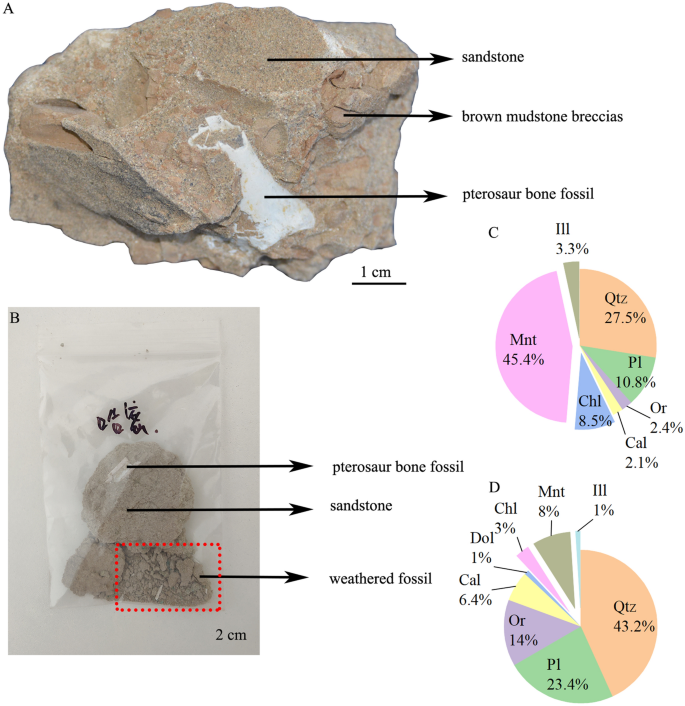Desalination of Hamipterus tianshanensis fossil by electrokinetic method: evaluation for treatment of clay-rich sandstone
IF 2.6
1区 艺术学
Q2 CHEMISTRY, ANALYTICAL
引用次数: 0
Abstract
Abstract The fossils of Hamipterus tianshanensis (Wang et al. in Curr Biol 24:1323–1330, 2014) and their eggs have important scientific significance because they can provide unique information about the reproduction, development, and evolution of pterosaurs. The fossils and the rock surrounding them have, however, been weathered, which including powdering and flaking, since they were relocated from Xinjiang to Beijing. The high content of soluble salts is a significant factor in fossil deterioration because the dissolution–recrystallization process can generate tremendous pressure and lead to decreased mechanical strength. This study evaluated the electrokinetic desalination performance for the fossils, and two types of poultices employed including paper pulp from Bioline ® and CKS121 (cellulose: kaolin: sand = 1:2:1, w/w). Mercury intrusion porosimetry (MIP), scanning electron microscopy (SEM), ion chromatography (IC), and other methods were applied to evaluate the desalination effect. The surface salt content reduction by applied direct current (DC) was about 70%, and the inner salt content reduction was about 80%. The experimental results suggest that the electrokinetic method is a promising way to desalinate fossils. Nonetheless, cracks appeared in the surrounding rock crack after electrokinetic desalination, which can be explained by the montmorillonite swelling-induced stresses. Pre-consolidation, especially for electro-chemical method may solve the cracking problem for the clay-rich sandstone desalination.

电动力法脱盐天山翼龙化石:富粘土砂岩处理效果评价
摘要天山Hamipterus tianshanensis (Wang et al. in Curr Biol 24:1323-1330, 2014)化石及其卵为翼龙的繁殖、发育和进化提供了独特的信息,具有重要的科学意义。然而,这些化石和它们周围的岩石在从新疆搬到北京的过程中已经风化,包括粉末状和剥落。可溶性盐的高含量是导致化石变质的重要因素,因为溶解-再结晶过程会产生巨大的压力,导致机械强度下降。本研究评估了化石的电动脱盐性能,并使用了两种类型的膏剂,包括Bioline®纸浆和CKS121(纤维素:高岭土:沙子= 1:2:1,w/w)。采用汞侵入孔隙度法(MIP)、扫描电镜(SEM)、离子色谱法(IC)等方法对脱盐效果进行了评价。施加直流电流可使表面含盐量降低约70%,内部含盐量降低约80%。实验结果表明,电动力法是一种很有前途的化石脱盐方法。但在电动脱盐后,围岩裂缝中出现了裂缝,这可以用蒙脱土的膨胀诱发应力来解释。预固结特别是电化学预固结可以解决富粘土砂岩海水淡化的开裂问题。
本文章由计算机程序翻译,如有差异,请以英文原文为准。
求助全文
约1分钟内获得全文
求助全文
来源期刊

Heritage Science
Arts and Humanities-Conservation
CiteScore
4.00
自引率
20.00%
发文量
183
审稿时长
19 weeks
期刊介绍:
Heritage Science is an open access journal publishing original peer-reviewed research covering:
Understanding of the manufacturing processes, provenances, and environmental contexts of material types, objects, and buildings, of cultural significance including their historical significance.
Understanding and prediction of physico-chemical and biological degradation processes of cultural artefacts, including climate change, and predictive heritage studies.
Development and application of analytical and imaging methods or equipments for non-invasive, non-destructive or portable analysis of artwork and objects of cultural significance to identify component materials, degradation products and deterioration markers.
Development and application of invasive and destructive methods for understanding the provenance of objects of cultural significance.
Development and critical assessment of treatment materials and methods for artwork and objects of cultural significance.
Development and application of statistical methods and algorithms for data analysis to further understanding of culturally significant objects.
Publication of reference and corpus datasets as supplementary information to the statistical and analytical studies above.
Description of novel technologies that can assist in the understanding of cultural heritage.
 求助内容:
求助内容: 应助结果提醒方式:
应助结果提醒方式:


